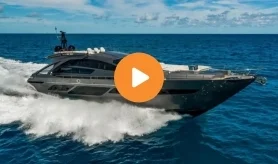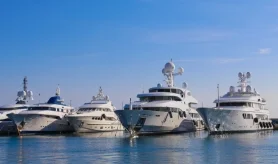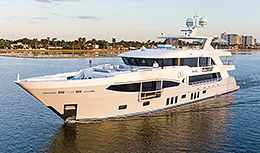- Alaskan Yachts
- Azimut Yachts
- Back Cove Yachts
- Beneteau Yachts
- Benetti Superyachts
- Bertram Yachts
- Boston Whaler
- Broward Yachts
- Buddy Davis Sportfish
- Burger Yachts
- Cabo Yachts
- Catamarans
- Carver Motoryachts
- Center Console
- Chris-Craft Yachts
- Cruisers Yachts
- DeFever Trawlers
- Dufour Sailboats
- Fairline Yachts
- Feadship Yachts
- Ferretti Yachts
- Formula Yachts
- Fountaine Pajot Cats
- Grady-White
- Grand Banks Trawlers
- Hargrave Yachts
- Hatteras Yachts
- Hinckley Picnic Boats
- Horizon Yachts
- Hydra-Sports
- Intrepid Boats
- Jarrett Bay Sportfish
- Jeanneau Yachts
- Kadey-Krogen Trawlers
- Lazzara Yachts
- Lekker Boats
- Luhrs Sportfish
- Marlow Yachts
- Maritimo Yachts
- Marquis Yachts
- Mazu Yachts
- McKinna Motoryachts
- Meridian Yachts
- Midnight Express
- MJM Yachts
- Mochi Craft
- Neptunus Motoryachts
- Nordhavn Trawlers
- Nordic Tugs
- Numarine Yachts
- Ocean Alexander Yachts
- Ocean King
- Offshore Yachts
- Outer Reef
- Oyster Sailing Yachts
- Pacific Mariner Yachts
- Palmer Johnson Yachts
Electric Boats Take Flight
These three electric boat brands are shining a bright light on the future of foiling powerboats.
Words by Kevin Koenig.
At this year’s Cannes Film Festival, the air crackled in one of Europe’s most glamorous cities as stars like Johnny Depp, The Weeknd, and Scarlett Johansson roamed the streets and massive mega yachts in town for the show twinkled in the harbor.
And yet nothing and no one in Cannes drew more attention than a 43-foot boat docked all the way out at the end of the pier in Port de Cannes. The boat was The Icon by Tyde and BMW (yes that BMW), a veritable spaceship on the water, hydrofoiling and fully electric. Without hyperbole, the world has never seen anything quite like it. But, as you’ll see, that’s not the only electric-powered foiling boat design that’s attempting to do with boats what Elon Musk did with cars–total electrification.

The Icon by Tyde and BMW
Taking inspiration from the Rolls-Royce Grand Tourer, she was designed for a passenger to take in the surrounding landscape while someone else drives. “When we started thinking about how we wanted this boat to be, we thought about it from the inside out,” says Christoph Ballin, Tyde’s founder. “So we thought of the view, and we asked ourselves ‘What do people want to see from their boat?’ and the answer was ‘Everything.’” The design implications of this answer were rather revolutionary. The Icon is fully encased in glass, without so much as a side deck. It looks something like a very modern Scandinavian living room, albeit one that not only floats on water, but floats above it. Powered by twin 100-kW Torqeedo engines (Ballin also founded Torqeedo) the boat lifts up out of the water at 18 knots and props itself up on foils. The results are magical, not the least of which because of the rousing score from Hans Zimmer that plays automatically as the hull extracts itself from the sea. The foils reduce drag immensely, resulting in 80 percent less energy usage than a similarly sized monohull, according to Ballin. Another place where the foils make an incredible difference is in the boat’s wake, which barely exists. The whole thing moves through the water leaving barely a ripple. Currently, range is 50 nautical miles at a 20-knot cruise speed. There is obviously room for improvement here, but Ballin says he envisions the range expanding to 150 nautical miles within the next five years thanks to advancements in technology.

As for the Icon’s place in the world, she isn’t simply an anomaly. The builder has received lots of interest in this boat from luxury resorts and similar entities, who envision her as a luxury ferry for guests. (That fully encased salon keeps everyone’s hair exactly in place on the way to dinner, after all.) But in the very near future Tyde plans to launch further iterations of this vessel with more dayboat-friendly features like a head and shower.
The Icon is the kind of boat that pushes the envelope and makes heads snap to attention. And though she may look like a prototype, Ballin assures us she is ready for a production run. Which means very soon you’ll have a chance to own your very own star of the show.

Candela
From the highly eco-conscious and tech-forward culture in Sweden comes Stockholm’s Candela, an electric-boat company that has made an aggressive push into the market over the past few years. The builder offers a line of five different vessels including a C-8 DC, C-8 CC, P-8 Voyager, P-8 Shuttle, and a P-12 Shuttle.
Candela was founded in 2014 by Gustav Hasselskog, with the goal of building an electric boat that was both fast and had decent range. Using heady design tools like dynamic modeling, control theory, machine learning, and more, he was able to put together a full-scale prototype by the end of 2016. That boat was able to travel for 50 nautical miles at a speed of 22 knots. The prototype went into production in 2019 and helped to launch Candela toward the front of the pack when it came to foiling electric boats.
A major motivator these days for the yard is to build a better battery. The company has partnered with electric-car company Polestar to source battery packs with high energy density and stringent safety standards. The two companies are also using blockchain technology to trace risk minerals from material sources all the way to the launch of the boat, as they believe that transparency is key when convincing the world to switch to electric boats.
Candela also puts a lot of focus on reducing noise, vibrations, and, most importantly, emissions. Its boats travel in near silence, with minimal impact on the environment. It’s the kind of effective and non-intrusive design you’d expect from a country that is basically synonymous with that sort of thing.

Navier N30
When a cutting-edge Silicon Valley tech firm teams up with a heritage boatbuilder in Maine, the results are sure to be interesting. And the result in this case of that unlikely marriage is the Navier N30. This all-electric hydrofoiling boat built with LymanMorse furthers Navier’s end goal of increasing the efficiency of small powerboats by 90 percent while also ensuring zero emissions. Lofty goals, but goals the builder fully believes are attainable.
“What has me and all of us at Lyman-Morse excited about the partnership with Navier is that we are developing something that is cutting edge and certain to be the future of yachting in this type of market,” said president and owner of LymanMorse, Drew Lyman. “To build a carbon fiber, foiling, all-electric boat fits well with what we do at Lyman-Morse, plus it’s a boatbuilder’s dream project. We [Lyman-Morse] built a reputation for beautifully crafted boats, and we are extremely proud of our ability to implement advanced systems and technology. This is exactly what the Navier project embodies!”
Navier also teamed up with America’s Cup engineer and world-renowned foiling expert Paul Bieker to take the reins on the boat’s naval architecture and mechanical design. Notably, the 30-footer comes equipped with assisted autopilot, and soon will have the ability to be fully selfdriving, giving her a low barrier of entry for the novice boater.
With a pedigree that touches all the bases when it comes to avant-garde and quality boatbuilding, the Navier N30 looks like an exceptionally viable prospect to help guide the world of foiling, electric boats forcefully into the future.

Request a Copy






